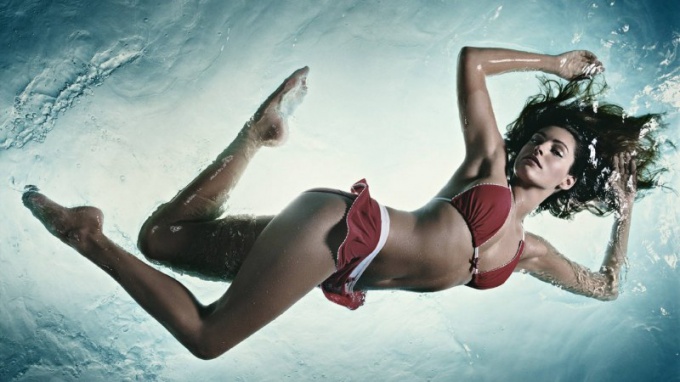Instruction
1
Prior to learn to swim, learn to breathe, submerging the chest in water. Don't be afraid of the water, relax, calm your breathing and breathe evenly, keeping your head above water. If you're scared, pressed and stops breathing, you will be much more difficult to swim.
2
Try to get the first of your classes as much as possible distractions, the water was pleasant for the body, there was a strong wind and excitement, and in order for you someone did. Ideal – pool. Or the sea, as salt water helps to learn how to swim.
3
Go into the water on the chest, inhale and hold your breath. Immediately after that, dive into the water, knees tighten to a breast and lock their hands. Nose tknite on his knees and hold on for as long as you have breath. Repeat the exercise until, until you overcome fear of water and not feel it freely.
4
Go into the water on the chest and turn around and face the shore. Vigorously pushing off with their feet and with their hands stretched out, lie with your chest on the water surface so that your body is beginning to slide towards the ground. After graduating from the slide, stand on your feet. After mastering this exercise, let's complicate it. While sliding, do rowing movements of the legs according to the principle last. The movement should be light, not too energetic, and toes outstretched. Try to relax during the slide.
5
Connect to the slide with his arms. So to go doggy style, bent arms hold ourselves apart. Alternately rake the water with your hand under yourself, making sure that traffic was steady and calm. Keep your head above water. Swim as long as you have the strength.
6
Be sure to follow the breath. Breathe in through the nose, the cheeks slightly inflate, hold your head above the water surface, moving it as ago. After you master this form of swimming, try to lower the chin into the water to relax the muscles of the neck.
7
Try a different style of swimming. Leg movements do froggy style: pulling towards yourself and pushing both legs. Hands make circular movements, pushing the water from himself. The left hand should move counter-clockwise synchronously with the right, which should describe the semicircle clockwise. Having mastered this style, you will be able to swim for a long time and almost without fatigue.
